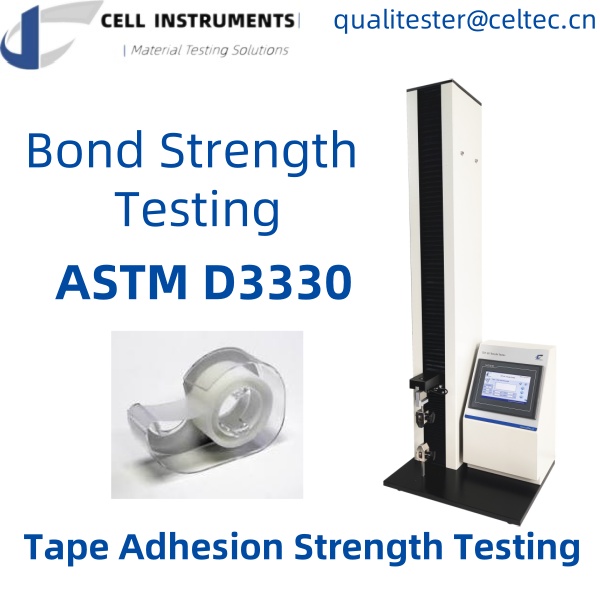การทดสอบความแข็งแรงของการยึดติดเทป: การรับประกันคุณภาพในการบรรจุภัณฑ์และการติดฉลาก
การแนะนำ
Tape adhesion strength testing is crucial in various industries, ensuring the reliability and effectiveness of adhesives used in packaging, labels, and medical applications. This testing evaluates how well a tape adheres to a surface under specific conditions, which is essential for maintaining product integrity and compliance with industry standards like ASTM D3330.
Understanding Tape Adhesion Strength Testing
This testing measures the force required to remove a tape from a substrate. This process is vital for manufacturers to ensure their products meet safety and performance standards. Proper adhesion guarantees that labels and packaging materials perform as expected throughout their lifecycle.
The Process of Bond Strength Testing
Bond strength testing, particularly in accordance with ASTM D3330, involves applying a consistent force to determine how well the tape sticks to various materials. This method provides insight into the tape’s performance under stress, ensuring it meets application requirements.
การทดสอบการลอกแบบ 90°
การทดสอบการลอกแบบ 180°
Key Factors Affecting Adhesion Strength
Several factors can influence the adhesion strength of tapes, including:
- Surface Texture: Smooth surfaces generally provide better adhesion than rough ones.
- Environmental Conditions: Temperature and humidity can significantly affect adhesive performance.
- Material Compatibility: The type of substrate (e.g., plastic, metal, paper) plays a crucial role in adhesion.
การเลือกอุปกรณ์ทดสอบที่เหมาะสม
When selecting equipment for tape adhesion strength testing, it’s essential to consider precision and reliability. The Cell Instruments tape adhesion strength tester is designed to meet these requirements, offering adjustable test speeds, multiple fixtures, and compliance with ASTM standards. Its advanced PLC control and user-friendly interface make it suitable for various applications.
Applications of Tape Adhesion Strength Testing
Tape adhesion strength testing is used across industries, including:
- บรรจุภัณฑ์: Ensures labels and seals maintain integrity during transport and storage.
- อุปกรณ์ทางการแพทย์: Validates the effectiveness of medical adhesives in critical applications.
- อิเล็กทรอนิกส์: Guarantees that protective tapes withstand environmental factors.
Interpreting Test Results
Understanding the results from tape adhesion strength testing is critical. Higher adhesion values typically indicate better performance, while lower values may suggest a need for reformulation or material changes. Consistent testing helps identify trends that can inform product development.
Best Practices for Effective Testing
To achieve reliable results in tape adhesion strength testing, consider the following best practices:
- Calibrate Equipment Regularly: Ensure your testing equipment is calibrated to maintain accuracy.
- Standardize Procedures: Follow consistent testing protocols to minimize variability.
- Document Results Thoroughly: Keep detailed records of test conditions and outcomes for future reference.
Tape adhesion strength testing is an essential component of quality assurance in many industries. By adhering to standards like ASTM D3330 and utilizing reliable testing equipment, manufacturers can ensure their products perform effectively and meet consumer expectations.
คำถามที่พบบ่อย
- What is tape adhesion strength testing?
- This testing measures how well a tape adheres to a surface and the force required to remove it.
- Why is bond strength testing important?
- It ensures that adhesives meet safety and performance standards, critical for product integrity.
- What standards govern tape adhesion strength testing?
- ASTM D3330 is the primary standard used for evaluating tape adhesion strength.
- How can I improve adhesion strength?
- Consider factors such as surface preparation, environmental conditions, and material compatibility.
- What testing equipment is recommended?
- The Cell Instruments tape adhesion strength testing machine is highly recommended for its precision and compliance with industry standards.

